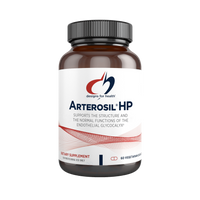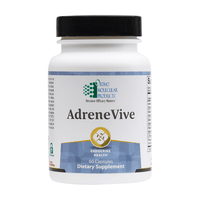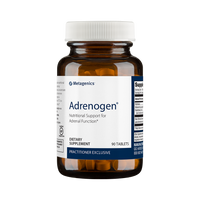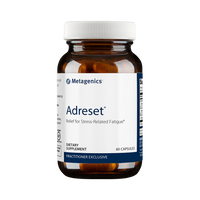Joint pain is the typical response to an injury. Injury triggers an inflammatory reaction creating swelling, redness, and heat. As the swelling and pressure builds, it irritates specialized nerve cells, called nociceptors (pain receptors). This pain and swelling are the normal body response. Natural anti-inflammatories reduce swelling to ease pain, and because they are safe, they can be taken for many days when compared to traditional over-the-counter medications (such as NSAIDs).
Non-steroidal anti-inflammatory drugs (NSAIDs) like ibuprofen (Advil, Motrin), naproxen (Aleve, Naprosyn), aspirin (Bayer, Bufferin), and others, are some of the most commonly-used medicines in the world due to their ability to reduce pain and inflammation. However, there are well-documented adverse side effects to be aware of, especially when taken on a longer-term basis – including heartburn, stomach pain (gastrointestinal bleeding and ulcers), as well as liver and kidney problems called hepatotoxicity and nephrotoxicity.
Acetaminophen (Tylenol) is also commonly used to reduce fever and pain caused by muscle aches and stiffness but, unlike NSAIDs, it does not relieve inflammation. Acetaminophen has unwanted side effects including nausea, stomach pain, loss of appetite, itching, rash, and headaches. Because of the potential adverse side effects from over-the-counter medications, some people choose to begin with natural anti-inflammatories.
Curcumin (derived from turmeric root) is a great choice because it is effective, safe, and one of the most powerful natural anti-inflammatories available. According to a scientific review of clinical trials, published in the journal Pain Medicine, curcumin was found to significantly reduce pain. While the study’s authors note that more research is needed, they say that curcumin should be considered for alleviating pain and that curcumin exhibits less adverse effects than NSAIDs do.
White willow bark is also an effective natural pain reliever and is derived from the bark of the willow tree. The active ingredient within the bark was initially discovered in 1828 and was named salicin. Salicin converts in the body to the beneficial anti-inflammatory chemical called salicylic acid. Many believe that white willow bark is the natural source of aspirin, however, white willow bark only contains a very small amount of salicin in comparison to Aspirin. Aspirin is also synthetically made by chemically modifying salicylic acid.
Some research indicates that white willow bark is as effective as aspirin, but at a much-smaller dose, because of white willow bark’s powerful pain reducing and anti-inflammatory compounds called flavonoids and polyphenols – which is likely a key factor of its lower risk for side effects. Flavonoids and polyphenols are widespread compounds in the human diet; present in many plants, fruits, and vegetables.
A comprehensive scientific review from the journal Phytotherapy Research found evidence that white willow bark extract appears to be just as good as the as the NSAID known as rofecoxib (Vioxx) at reducing low back pain. Note that white willow bark products should not be used by those with a known aspirin allergy. To learn about how white willow bark can address instances of back pain-related injury, read our article “Dogged by Back Pain? You May Need Some Bark.”
Other natural supplements such as bromelain and ginger root extracts are also popular remedies for helping with injuries and the associated pain and inflammation. Bromelain (which is derived from the fruit and stem of the pineapple plant) is believed to help the body make the substances it needs to fight pain and swelling, while ginger root is believed to inhibit the body’s production of the substances related to pain and swelling – making them a good pair.
In addition to natural anti-inflammatories, and depending on the severity of your injury, there are other natural strategies you can consider:
PRICE method – protection of the injury, rest, icing it for up to 20 minutes every hour, compressing the injury with a wrap or immobilizing with a splint, and elevating it above the heart to decrease blood flow and swelling. It’s important to remove the ice after 20 minutes – longer is not better. After about 72 hours, begin to use heat to increase blood flow and help with the body’s natural healing process.
Hot-Cold therapy – After the majority of the initial swelling and pain has decreased, start alternating between ice and heat. Ice will help minimize blood flow and reduce swelling and inflammation while also numbing the body’s pain receptors. After about 10 minutes, switch to heat – which will increase blood flow to the tissues and supply needed nutrients to support the repair process. Alternating back and forth can help create a flushing effect within the tissue.
Gentle mobilization and stretching of the injured area – The quicker you get the injured joint moving in a pain-free manner, the quicker the area is going to heal.
Clean Eating – Eating a clean diet (full of fruit and vegetables, whole grains, high-protein foods, and plenty of water) and eliminating refined carbohydrates, processed foods, and sugars put the body in the best position to heal. Increasing consumption of the healthy omega-3 oils called EPA and DHA (eicosapentaenoic acid and docosahexaenoic acid) is also helpful.
For those looking to try a high quality and effective curcumin supplement, I recommend Ortho Molecular’s Turiva due to its full-spectrum approach of including the complete turmeric matrix. I also recommend Designs for Health’s Curcum-Evail 400, which contains turmeric oil and three of the most-researched curcuminoids within the turmeric root. Both are designed to avoid any GI irritation and are typically well-tolerated by my patients.
If you want to see what white willow bark can do for injury management, I prefer White Willow Forte by Nutra BioGenesis. It not only provides a research-supported dose of white willow bark, but also utilizes a unique formula of other well-known natural anti-inflammatories -- including bromelain and ginger root extract.
I hope this information is useful to you and if you have any questions regarding the concepts discussed here or anything else, you can reach our customer service team at: customerservice@oakwaynaturals.com or you can call them at 888-460-3091.
Sincerely,
Dr. Gregg Gittins
















 a
a